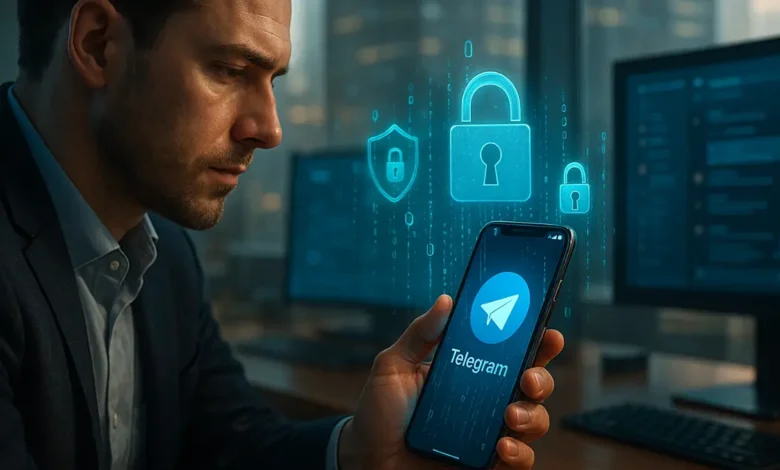How Secure Is Telegram? A Comprehensive Analysis

Wondering how secure is Telegram? Explore its encryption, privacy features, secret chats, and real security risks to understand how safe your conversations really are.
Introduction How Secure Is Telegram?
Telegram has become one of the most popular messaging apps worldwide, attracting millions of users with its speed, features, and user-friendly interface. From casual conversations to professional communication, its versatility is appealing. However, with popularity comes scrutiny, and questions about the platform’s security and privacy have become increasingly relevant. This article dives deep into Telegram’s security protocols, potential vulnerabilities, and best practices to help users safeguard their data.
Understanding Telegram’s Encryption Protocols
MTProto: Telegram’s Custom Encryption
Telegram employs a proprietary encryption protocol called MTProto. This protocol is designed to balance speed and security, particularly for Telegram’s cloud-based architecture. While MTProto is robust in many areas, it hasn’t undergone the same level of independent, widespread security audits as other protocols used by apps like Signal, which raises concerns about its long-term reliability.
End-to-End Encryption: Optional but Not Default
A critical aspect of Telegram’s security is that end-to-end encryption (E2EE) is not enabled by default for regular chats. Standard chats are encrypted between the user’s device and Telegram’s servers, meaning messages are technically readable by Telegram while stored on their servers. For true privacy, users must enable “Secret Chats,” which provide device-to-device encryption, ensuring only the sender and recipient can access the message content. Secret Chats also feature self-destruct timers for added security.
Privacy Concerns with Telegram
Data Storage and Server Access
Telegram’s cloud storage allows users to access messages across multiple devices, which is convenient but introduces potential risks. Messages in standard chats are stored on Telegram’s servers and could theoretically be accessed in case of unauthorized breaches. While the platform implements strong technical safeguards, the centralized nature of cloud storage inherently carries security risks.
Metadata Collection
Even when messages are encrypted, Telegram can still collect metadata, such as the identities of people communicating, timestamps, and frequency of interaction. Metadata may not reveal message content, but it can provide significant insight into user behavior and patterns, which could be a concern for privacy-conscious individuals.
Telegram’s Vulnerabilities and Security Flaws
Exploits and Malware Risks
Telegram has experienced security incidents, such as malicious files being disguised as videos or apps. These vulnerabilities could be exploited to compromise devices if users are not cautious. Fake versions of Telegram, including modified premium apps, have occasionally appeared, aiming to collect sensitive information or inject malware.
Group Chats and Bots
Group chats and interactions with bots do not have end-to-end encryption. Messages are stored on Telegram’s servers, meaning that they are technically accessible to the platform. Users should be aware that information shared in groups or with bots is less secure than private Secret Chats.
Best Practices for Enhancing Telegram Security
Use Secret Chats
For sensitive conversations, always opt for Secret Chats. These chats offer full end-to-end encryption, self-destruct timers, and prevent forwarding of messages. This is the most reliable way to ensure messages remain private.
Enable Two-Step Verification
Adding two-step verification enhances account security by requiring a secondary password along with your phone number. This prevents unauthorized access even if someone gains access to your SIM card.
Be Wary of Bots and Unknown Links
Avoid interacting with unverified bots or clicking on suspicious links. Bots may collect information or redirect users to unsafe content. Stick to official Telegram channels and trusted bots to minimize risk.
Keep the App Updated
Regularly updating Telegram ensures that you have the latest security patches. Security vulnerabilities are routinely fixed in updates, and staying current is a key aspect of maintaining account safety.
Quotes on Digital Messaging Security
“No system is perfectly secure; the best we can do is minimize risk and make exploitation difficult.” – Security Expert
“Encryption is only as effective as the user’s awareness of how to implement it properly.” – Cybersecurity Analyst
FAQ
Q: Is Telegram safer than WhatsApp?
A: Telegram offers unique features like Secret Chats and cloud-based multi-device access, but default chats are not end-to-end encrypted. WhatsApp uses end-to-end encryption by default, which may make it safer for casual users.
Q: Can Telegram messages be hacked?
A: Standard chats could theoretically be accessed through Telegram servers if compromised. Secret Chats, however, are end-to-end encrypted and far more difficult to hack.
Q: Are Telegram bots safe to use?
A: Not all bots are secure. Only use bots from verified channels and avoid providing sensitive information to untrusted bots.
Q: Can Telegram be used anonymously?
A: Telegram allows usernames instead of phone numbers for some interactions, but phone registration is required. Secret Chats provide better privacy, but true anonymity is limited.
Q: How can I ensure my Telegram is secure?
A: Enable Secret Chats, use two-step verification, avoid unverified bots and links, and keep the app updated regularly.
Conclusion
Telegram offers impressive features and flexibility, but its security depends heavily on how users utilize it. While standard chats provide basic protection, true privacy is achieved through Secret Chats and additional security measures. By understanding Telegram’s strengths and limitations, users can make informed choices and enhance their digital privacy.





